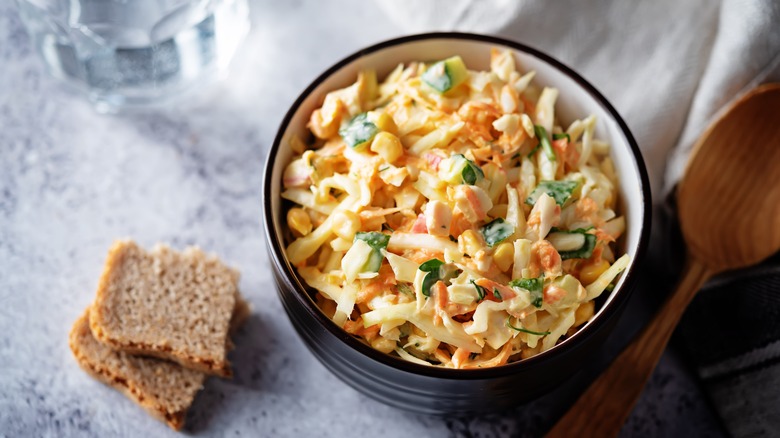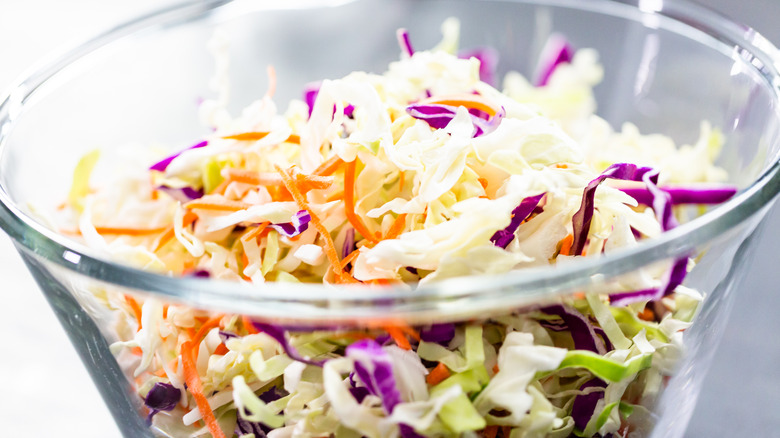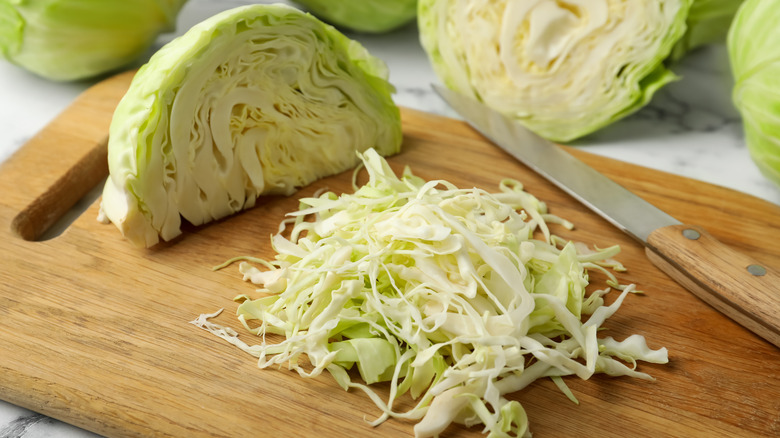Stop Wasting Time And Use Your Microwave To Make Coleslaw
If you're encountering watery coleslaw, you could be making one of the most common coleslaw-making mistakes: Not salting the cabbage before dressing. After carefully shredding, most basic coleslaw recipes call for you to salt the cabbage and let it sit for at least 20 minutes, with some recipes recommending several hours. This will draw out moisture that can make the coleslaw watery and soggy as it soaks up even more dressing. If you don't have the time to waste waiting for water to seep out of cabbage, your microwave can speed up the process.
What you are essentially doing by salting the cabbage and waiting is slightly dehydrating the cabbage. A microwave, which cooks food by vibrating molecules like water within the food, can also dehydrate. A few well-timed zaps in the microwave will evaporate some of the water in your coleslaw in a fraction of the time you would let it sit in the fridge. This partially dehydrated cabbage will hold its crispness in the coleslaw and taste much better.
How to microwave cabbage for the perfect coleslaw
The idea of using the salting technique is to avoid adding any heat to the cabbage to dehydrate it. So, when you use a microwave, it will apply heat that must be carefully controlled. You want to remove some of the water without completely cooking the cabbage. To do this, shred the cabbage as normal and add about one teaspoon of salt and a few tablespoons of sugar per head of shredded cabbage. After microwaving the slaw for one minute on high, you should end up with what looks like about two-thirds the amount of cabbage, with water pooling below. When you taste the cabbage, it should still be crunchy but not watery.
If the cabbage hasn't wilted enough, microwave for an additional 30 seconds and then recheck the cabbage. Repeat as needed. Once you've reached the desired texture, allow the cabbage to cool and squeeze out the excess liquid with an absorbent paper towel or clean kitchen towel. Finally, add your dressing and refrigerate.
Other tips for avoiding watery coleslaw
While drawing out moisture will leave you with crunchier, tastier coleslaw, there are other tips to follow for the best flavor and texture. Be sure to slice the cabbage with a very sharp blade to avoid damage to cell walls that will cause the leaves to wilt. A good chef's knife or a food processor can be used, but you can also use a sharp vegetable peeler to make coleslaw, which will result in finer, more even shreds. You could also massage the cabbage after salting, microwaving, and draining to further break up the cell walls and allow for dressing penetration.
When looking for a creamy coleslaw dressing, make sure to choose one that is balanced in both creamy and acidic ingredients to complement the crisp cabbage. Generally, this is done with a mix of buttermilk or mayonnaise and citrus juice or vinegar. Don't choose one with too much vinegar, or your mixture will become too liquid. If you don't want to make your own, several store-bought coleslaw dressings are worth a try.


